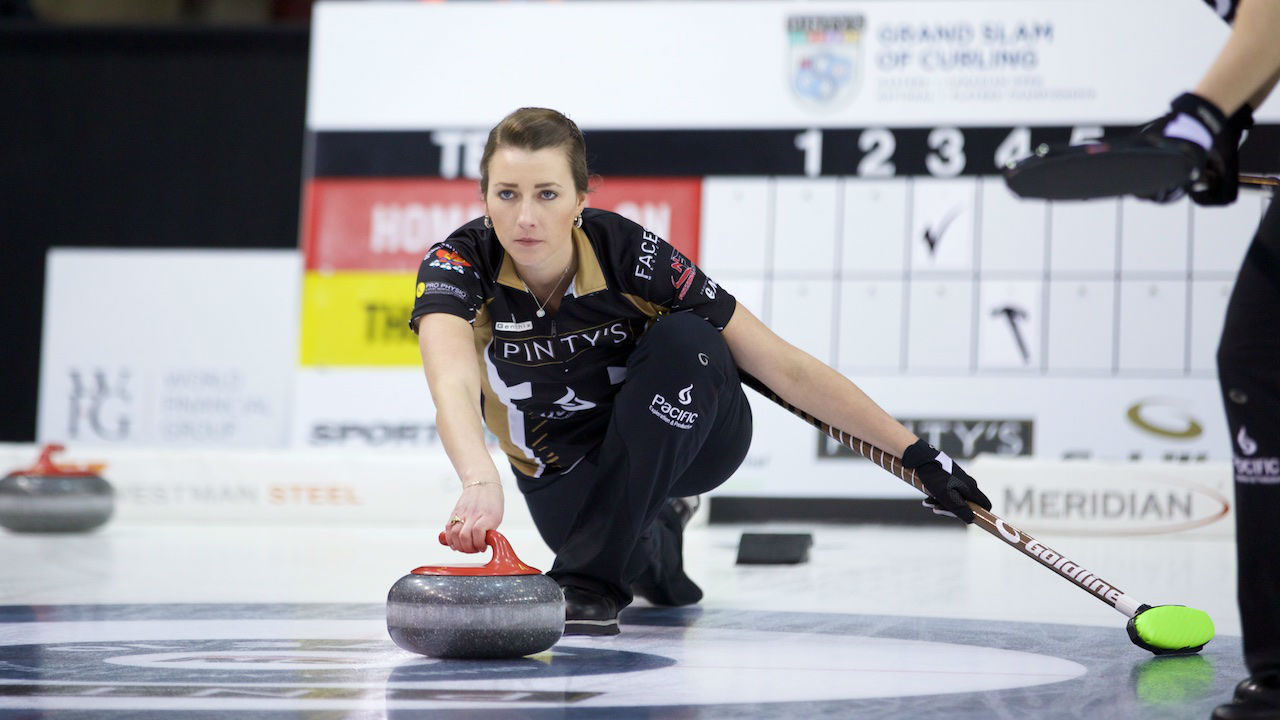Miskew: Trying something new with mixed doubles
By Emma Miskew
Training over the past few weeks was a little bit different for Team Homan. In addition to our normal training, we were training for the Mixed Doubles Nationals in Saskatoon, in which we all competed last week.
The name kind of speaks for itself … two players — one guy, one girl. While it is still curling and incorporates shots I normally play on my team, there are some fairly large differences as well.
The rules are a little tricky to get used to at first. There are two placed rocks at the start of the end, and then between the two players there are five rocks thrown per team. The team with hammer gets a rock placed back four foot, and the team without hammer has a centre line guard placed in front of the opposition’s back-four rock. The person (guy or girl, which is up to the team and can change every end if they would like) who throws the first rock of the end also throws the last rock, leaving the other person to throw rocks two, three and four.
When you throw first and last, you don’t get the luxury of ever getting to throw two shots in a row, which I found to be one of the biggest challenges and differences between four-person curling and mixed doubles.
One of the other differences is that while you can have your partner sweep your rock, you don’t have a broom to aim at or a skip at the other end calling line. Alternatively, you can choose to have a broom to throw at and a line caller, but you have to get up and sweep your own rock after you’ve let it go. Not QUITE the same as having a skip at the other end calling the game, holding the broom, calling line AND having two sweepers to help discuss the draw weight and sweep your rocks.
This is where my practices leading into the event changed. I would practice throwing draws, then running to catch up with the rock and sweeping it while also practicing throwing without a broom and then calling my own line.
There are also some fairly large strategical differences from mixed doubles to four-person curling. Two rocks are placed on the centre line at the start of each end, and the first three thrown rocks cannot remove any rocks from play, including these rocks. So this is like the four-rock rule in curling, except you can’t even hit a rock in the rings.
Also, each team can use a ‘Power Play’ once per game. A power play is where the rocks that are set up at the beginning of each end move from the centre line to the eight-foot line and the rock that was once back four is moved to above the t-line. This is the hardest play to defend against and usually results in multiple points for the team with hammer.
While I’m still trying to get used to this unique version of curling, it has definitely made me realize one thing — I appreciate all that my teammates do in four-person curling much more now. Everyone’s roles out there are so important to us all making our shots! Also, when there’s a runback or a shot that moves multiple rocks, there are a LOT more people there to catch the flying rocks!
Overall, mixed doubles is a cool experience and is fun to play, but I won’t be quitting my regular team any time soon!
